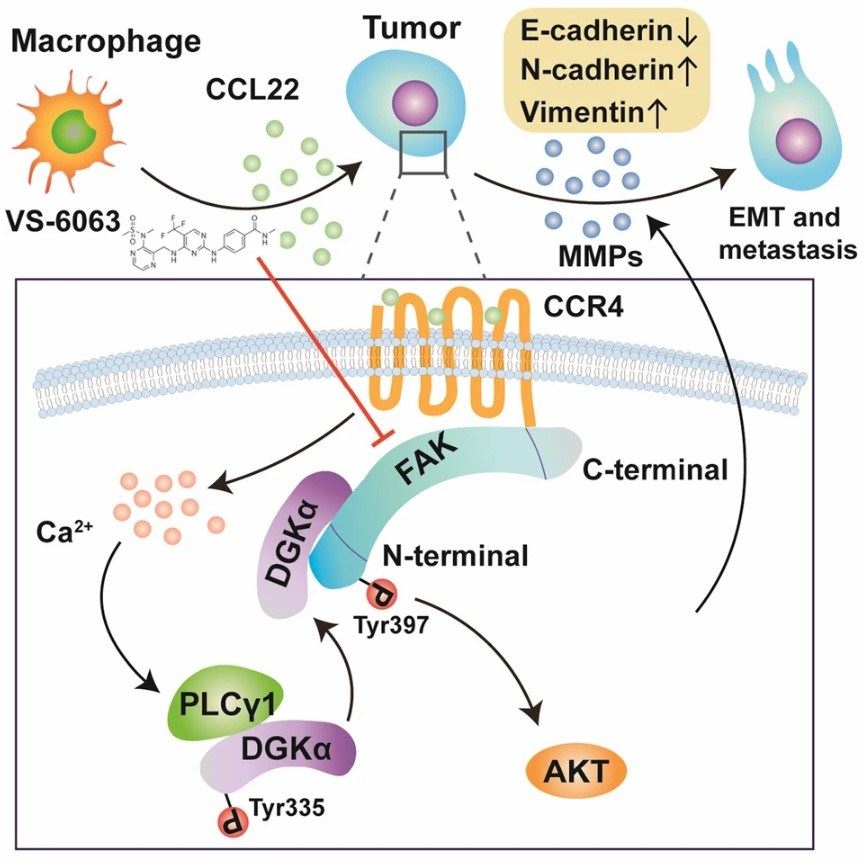What is CCL22 Protein
In the intricate landscape of molecular biology, the CCL22 protein, also recognized as Macrophage-Derived Chemokine (MDC), emerges as a pivotal player in orchestrating immune responses.
What is CCL22 Protein?
CCL22, a member of the CC chemokine family, possesses a distinctive structure characterized by two adjacent cysteine residues near its amino terminus. Macrophages and dendritic cells primarily secrete CCL22 in response to various stimuli, exemplifying its role as a key orchestrator of immune responses.
The Function of CCL22 Protein
At the heart of CCL22's functionality lies its capacity to attract specific immune cells to sites of inflammation or injury. This chemokine interacts predominantly with CCR4, its receptor found on the surface of T-helper type 2 (Th2) cells, regulatory T cells (Tregs), and select dendritic cell subsets. This interaction facilitates the recruitment of Th2 cells and Tregs to inflammatory sites, finely regulating the delicate balance between pro-inflammatory and anti-inflammatory responses.
CCL22-Related Diseases
- Asthma and Allergic Disorders
Elevated CCL22 levels in the lungs have been implicated in asthma and allergic disorders. The overproduction of CCL22 intensifies the allergic response, leading to symptoms such as airway inflammation and bronchoconstriction. This insight provides a potential target for therapeutic interventions in these conditions.
- Autoimmune Diseases
In autoimmune diseases like rheumatoid arthritis and multiple sclerosis, dysregulated CCL22 expression contributes to inflammation and tissue damage. Understanding the interplay between CCL22 and autoimmune responses offers a glimpse into novel avenues for therapeutic strategies.
- Cancer
CCL22's involvement in creating an immunosuppressive microenvironment in tumors positions it as a promising target for cancer immunotherapy. Inhibiting CCL22 or blocking CCR4 on Tregs could enhance anti-tumor immune responses, presenting a breakthrough approach to cancer treatment.

Figure 1. Proposed model of tumor-associated macrophage-derived CCL22-induced oncogenic addiction to hyperactivated FAK. (Chen, J., et al. 2022)
CCL22 Related Signaling Pathways
- PI3K-Akt Pathway
Upon binding to CCR4, CCL22 activates the phosphoinositide 3-kinase (PI3K)-Akt pathway, influencing the migration and survival of immune cells. This pathway's activation serves as a critical component in the regulation of immune responses, providing a potential target for modulating immune cell behavior.
- MAPK Pathway
CCL22's modulation of the mitogen-activated protein kinase (MAPK) pathway further contributes to the intricate regulation of immune cell function and the inflammatory response. Understanding the signaling pathways associated with CCL22 unveils potential therapeutic targets for diseases characterized by immune dysregulation.
Applications of CCL22 in Biomedical Research
- Immunotherapy in Cancer
Exploiting CCL22 as a target in cancer immunotherapy showcases its potential in reshaping anti-tumor immune responses. Strategies that inhibit CCL22 or interfere with its receptor, CCR4, present a promising avenue for novel cancer treatments.
- Inflammatory Diseases
The central role of CCL22 in recruiting immune cells to inflammatory sites positions it as a focal point for therapeutic development in inflammatory diseases. Targeting CCL22 or its receptor CCR4 offers a means to finely tune immune responses in conditions such as asthma, rheumatoid arthritis, and inflammatory bowel diseases.
- Biomarker Discovery
Monitoring CCL22 levels as a potential biomarker emerges as a valuable diagnostic tool for various diseases. Elevated CCL22 levels in blood or tissues could signify ongoing inflammation or immune dysregulation, providing clinicians with actionable insights for diagnosis and treatment monitoring.
- Drug Development
The exploration of pharmaceuticals targeting CCL22 or its associated pathways opens new frontiers in drug development. Small molecules, antibodies, or other agents modulating CCL22 activity may pave the way for innovative treatments addressing a spectrum of immune-related disorders.
From its role in guiding immune cells to sites of inflammation to its implications in diseases spanning from asthma to cancer, CCL22 continues to unveil its complexities. As researchers delve deeper into the intricacies of CCL22, the potential for groundbreaking therapeutic interventions and diagnostic tools beckons, promising a future where immune-related disorders are met with targeted precision and efficacy.
Recommended Products for CCL22 Protein
| Cat.# | Species | Product name | Source (Host) | Tag |
|---|---|---|---|---|
| CCL22-18H | Human | Active Recombinant Human CCL22, HIgG1 Fc-tagged | CHO | Fc |
| CCL22-67H | Human | Recombinant Human CCL22 protein | E.coli | N/A |
| CCL22-29753TH | Human | Recombinant Human CCL22, His-tagged | E.coli | His |
| CCL22-702H | Human | Recombinant Human CCL22 protein, His & GST-tagged | E.coli | His/GST |
| CCL22-0627H | Human | Recombinant Human CCL22 Protein, GST-Tagged | Wheat Germ | GST |
| CCL22-63H | Human | Recombinant Human CCL22 Protein, Biotin-tagged | E.coli | Biotin |
| CCL22-1678M | Mouse | Active Recombinant Mouse CCL22, MIgG2a Fc-tagged | CHO | Fc |
| CCL22-978M | Mouse | Recombinant Mouse CCL22 protein, His-tagged | E.coli | His |
| Ccl22-2034M | Mouse | Recombinant Mouse Ccl22 Protein, Myc/DDK-tagged | HEK293T | Myc/DDK |
| Ccl22-703R | Rat | Recombinant Rat Ccl22 protein, His & GST-tagged | E.coli | His/GST |
Reference
- Chen, J., et al. Tumor-associated macrophage (TAM)-derived CCL22 induces FAK addiction in esophageal squamous cell carcinoma (ESCC). Cell Mol Immunol. 2022, 19: 1054–1066.

